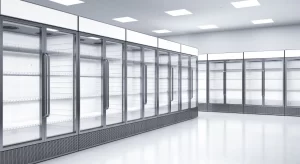Is a Cool Room the Same as a Fridge? Debunking the Differences and Similarities
The Cool Room and the Fridge: Exploring the Distinctions
Introduction
When it comes to preserving perishable items and keeping our food fresh, we often rely on common household appliances like refrigerators. However, in certain contexts, you might have come across the term “cool room” and wondered if it is synonymous with a fridge. Are these two cooling systems really the same, or do they have distinct features and applications? In this article, we will delve into the world of cool rooms and fridges, unraveling their differences and similarities.
The Cool Room: Beyond the Basics
Understanding Cool Rooms
Cool rooms, also known as cold storage rooms or walk-in coolers, are specialized environments designed to maintain lower temperatures for extended periods. They are commonly found in commercial settings such as restaurants, grocery stores, and warehouses. The primary purpose of a cool room is to store large quantities of perishable items, including fruits, vegetables, dairy products, and meats, at controlled temperatures.
Cool Room Features

Cool rooms are considerably larger than typical household refrigerators. They are often equipped with shelving units and racks to facilitate organized storage of various items. Unlike a standard fridge, cool rooms are not restricted by size limitations, allowing for greater storage capacity. Additionally, cool rooms are designed to handle fluctuations in temperature more effectively, ensuring a consistent and controlled environment for the stored goods.
Applications of Cool Rooms
Cool rooms find their applications in diverse industries. Restaurants utilize cool rooms to store fresh ingredients in bulk, maintaining the quality and taste of their dishes. In the pharmaceutical sector, certain medications and vaccines require specific temperature conditions that cool rooms can provide. Floral shops also benefit from cool rooms to keep cut flowers and arrangements vibrant and fresh for longer periods.
The Fridge: A Familiar Companion
Insight into Refrigerators
The refrigerator, or fridge, is a staple appliance in households worldwide. It serves as a vital tool for keeping everyday food items safe to consume and preventing spoilage. Unlike cool rooms, which are commonly used in commercial settings, refrigerators are primarily designed for domestic use.
Features of a Refrigerator
Refrigerators come in various sizes and configurations, catering to the needs of different households. They typically consist of compartments with adjustable shelves, door bins, and drawers, enabling users to organize and access their food conveniently. Modern refrigerators often come equipped with advanced features such as temperature control settings, ice makers, and water dispensers.
Domestic Applications
The primary purpose of a household refrigerator is to extend the shelf life of perishable foods, reduce food waste, and provide convenience to individuals and families. It is ideal for storing smaller quantities of items that are frequently used, such as leftovers, beverages, and everyday essentials like eggs and milk.
Differences and Similarities
Temperature Range
One of the key distinctions between cool rooms and fridges is the temperature range they maintain. Cool rooms are designed to operate at lower temperatures, typically ranging from 0°C to 5°C (32°F to 41°F). This range is suitable for storing a wide variety of perishable items for extended periods. In contrast, household refrigerators usually maintain temperatures between 1°C and 4°C (34°F to 39°F), which are well-suited for short-term storage of everyday foods.
Size and Capacity

Cool rooms and fridges significantly differ in size and storage capacity. Cool rooms are expansive storage areas that can accommodate large quantities of items, making them ideal for businesses that deal with bulk produce. On the other hand, refrigerators are designed to fit comfortably in a household kitchen, providing ample space for everyday essentials and leftovers.
Intended Use
While both cool rooms and refrigerators serve the purpose of preserving food, their intended use cases vary. Cool rooms are tailored for commercial applications, offering a solution for businesses that require efficient storage of perishable goods on a larger scale. Refrigerators, however, cater to the needs of households, ensuring that families have access to fresh and safe-to-consume food items at all times.
Conclusion
In the world of temperature-controlled storage, cool rooms and refrigerators play distinct yet complementary roles. While cool rooms excel in providing expansive and consistent storage for commercial enterprises, refrigerators have become an integral part of household kitchens, enhancing our daily lives by preserving our favorite foods. Understanding the differences and similarities between these cooling systems allows us to appreciate their unique contributions to food safety and convenience. Whether in a bustling restaurant kitchen or a cozy home, both cool rooms and fridges remain indispensable tools in the preservation of perishable items. https://commgen.com.au/

Recent Comments